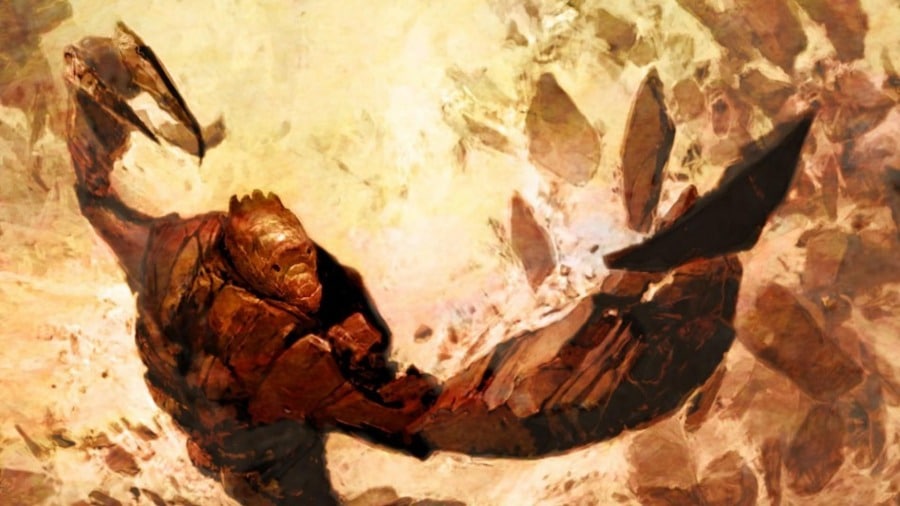Earth Genasi Guide 5e
Published on December 27, 2022, Last modified on February 1st, 2023
These steadfast creatures make ideal martial characters, but their other uses may surprise you.

Anthony S. Waters - Wizards of the Coast - Earth Elemental
What is this guide?
This guide is meant to give you an idea of whether or not the earth genasi will be right for your 5e character build.
The color code below has been implemented to help you identify, at a glance, how good that option will be for your earth genasi. This color coding isn’t a hard and fast rule; there are plenty of sub-optimized options out there that will be viable to your party and will be fun to play.
- Black is a trait shared by many races and or will not impact the effectiveness of your character build
- Red isn’t going to contribute to the effectiveness of your character build at all
- Orange Situationally good, but a below-average option otherwise
- Green is a good option
- Blue is a great option, you should strongly consider this option for your character
- Sky Blue is an amazing option. If you do not take this option your character would not be optimized
Tasha's Cauldron of Everything Update
Tasha's Cauldron of Everything has added the "Customizing Your Origin" option that may affect the ability score increases, languages, and proficiencies in this guide. To read more about this, visit our D&D Race Guide.
What are Earth Genasi in 5e?
Source: Monsters of the Multiverse
Earth genasi are a race of humanoid creatures who descended from the vain and greedy dao—genies from the Elemental Plane of Earth. They tend to be strong, resilient, and hardy, with cracks running through their earth-infused skin. Their hair can range from earth tones like brown and gray to more vibrant hues like red or green.
Earth genasi are connected to the earth in a deep and fundamental way. They possess strong earth-related magic abilities that can enhance their durability, and movement through difficult environments.
Despite their formidable physical prowess, earth genasi are often enamored by the earth’s natural beauty, and often possess an innate sense of artistry and creativity. They are often quite skilled at earth-based crafts like pottery or gardening, and enjoy spending time in nature.
Earth Genasi 5e Traits
Size: Being able to choose between Small and Medium allows you to fine-tune your build. Looking to go for a heavy weapon-weilding barbarian? Medium is the way to go. Wanting to lean a bit more to the stealthy side of things? Small size might be right for you.
Darkvision: Darkvision is always great, but its advantage can be ruined if your party members do not also have it.
Earth Walk: Unrestricted movement across difficult terrain is really situationally useful, even if it’s no longer restricted to earth and stone terrain like the last iteration of the earth genasi.
Merge with Stone: Blade ward is a clunky spell because you have to spend an action to potentially reduce damage over the next round of combat. Being able to cast is as a bonus action prof. times per long rest certainly makes it more useful and can help with survivability when you know you’re about to take a beating. On top of this, a free cast of pass without trace once per long rest is fantastic. The spell has a 1 hour duration, so you should probably be able to get your sneaking done for the day in that amount of time.
Sources Used in This Guide
- BR: Basic Rules
- GotG: Bigby Presents: Glory of the Giants
- SotDQ: Dragonlance: Shadow of the Dragon Queen
- ERLW: Eberron: Rising from the Last War
- EEPC: Elemental Evil Player’s Companion
- EGtW: Explorer’s Guide to Wildemount
- FToD: Fizban's Treasury of Dragon
- GGtR: Guildmasters' Guide to Ravnica
- MotM: Monsters of the Multiverse
- MToF: Mordenkainen’s Tome of Foes
- MOoT: Mythic Odyessys of Theros
- PAitM: Planescape: Adventures in the Multiverse
- PHB: Player's Handbook
- SAiS: Spelljammer: Adventures in Space
- SCoC: Strixhaven: A Curriculum of Chaos
- SCAG: Sword Coast Adventurer’s Guide
- TCoE: Tasha’s Cauldron of Everything
- TTP: The Tortle Package
- WBtW: The Wild Beyond The Witchlight
- VRGtR: Van Richten's Guide to Ravenloft
- VGtM: Volo's Guide to Monsters
- XGtE: Xanathar’s Guide to Everything
